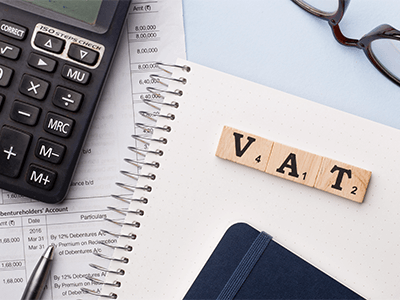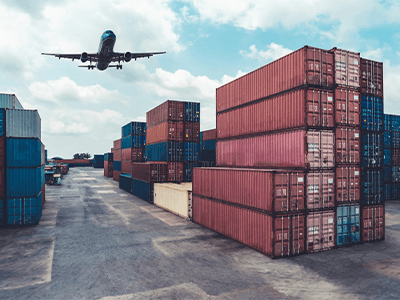VAT OPTIMIZATION MANUAL
A practical, up-to-date guide to optimizing VAT compliance and efficiency in the UAE (2025 edition)
Introduction
Value Added Tax (VAT) has been in force in the UAE since January 1, 2018, with a standard rate of 5%. Over the years, the UAE government has refined the VAT framework to address complexities and emerging business models. As of late 2024, Cabinet Decision No. 100 of 2024 introduced 35 amendments to the VAT Executive Regulations, effective 15 November 2024. This manual is designed to help you not only remain compliant, but also to optimize your VAT position legally and strategically.
UAE VAT Fundamentals
The standard VAT rate remains 5% for most goods and services. There are zero-rated and exempt supplies. Businesses can recover input VAT on costs related to taxable supplies, while recovery on exempt supplies is restricted.
Recent Regulatory Amendments (2024–2025)
Key changes include:
New definitions: 'business day', 'standard rate', 'virtual assets'.
Disposal of real estate now explicitly treated as supply of goods.
Clarifications on composite vs multiple supplies.
Export zero-rating subject to stricter presence rules.
Fund management services may be VAT-exempt.
Input tax recovery conditions tightened.
Option for fixed recovery rate with FTA approval.
VAT Registration & Deregistration Strategies

VAT rules: register above AED 375K; optimize timing and grouping.
Mandatory registration if taxable supplies exceed AED 375,000; voluntary from AED 187,500. Non-resident suppliers must register from first taxable activity. Deregistration applies if turnover falls below threshold. Optimization includes group registration and timing large expenses with registration status.
Invoicing, Time of Supply & Tax Point Optimization
Invoices must meet FTA requirements. Businesses must classify composite vs multiple supplies correctly. Adjustments like discounts and credit notes can affect tax points. Proper planning can help defer tax points when compliant.
Input VAT Recovery & Apportionment Methods
Businesses making both taxable and exempt supplies must apportion input VAT. Options include standard turnover-based apportionment or applying for a fixed recovery rate. Capital expenditure must be allocated correctly. Medical insurance VAT for employees can be recoverable under conditions.
Cross-Border Transactions & Reverse Charge

Imports under reverse charge; exports zero-rated; digital services now taxable.
Imports are handled under reverse charge mechanism. Exports are usually zero-rated, provided documentation is maintained. Service exports have stricter presence rules under amendments. Digital services and virtual assets are clarified as taxable under new definitions.
Free Zones, Designated Zones & VAT Planning
Designated free zones may treat goods transactions as outside scope if conditions met. Services remain subject to VAT. Proper structuring can reduce VAT on inter-zone transfers.
Sector-Specific VAT Optimization Strategies
Real Estate: Separate residential (exempt) from commercial (taxable).
E-Commerce: Apply place-of-supply rules correctly.
Fund Management: May now be exempt under amendments.
Healthcare: Differentiate between exempt medical and taxable cosmetic services.
Retail: Use margin scheme where allowed.
Common Pitfalls & Risk Mitigation
Frequent issues include misclassifying supplies, late invoicing, missing export documents, and incorrect apportionment. Mitigation requires regular VAT health checks, policies, and proper audit trails.
Annual VAT Planning & Review
Before each tax year, businesses should forecast turnover, adjust apportionment methods, update VAT policies, and review refund positions to ensure compliance and optimization.
Tools & Technology for VAT Optimization
ERP systems, automated VAT engines, dashboards, OCR invoice scanning, and audit-trail tools help streamline VAT compliance.
Frequently Asked Questions (FAQs)
Has the VAT rate changed?
Still 5%.
Can office rent input VAT be recovered if used for exempt supplies?
Only partially.
When did new amendments take effect?
15 November 2024.
Are fund management services taxable?
Now exempt if licensed under new rules.
What is the fixed recovery rate?
FTA-approved simplified apportionment method.
How We Can Help
We provide VAT health checks, registration advice, input VAT recovery support, structuring guidance, technology integration, and representation in FTA audits. Contact us to build a tailored VAT optimization strategy for your business.
Consult with an Expert
Still have questions? Our team is here to help

Innovation
Fresh, creative solutions.

Integrity
Honesty and transparency.

Excellence
Top-notch services.

FOLLOW US
CALL US
+971 4 395 2630
EMAIL US
[email protected]
LOCATION
Office 406, Dubai Supreme Court Complex,
Dubai, United Arab Emirates
COMPANY
CUSTOMER CARE
LEGAL
Copyright 2025. MP Elites Consulting LLC. Dubai, UAE. All Rights Reserved.
